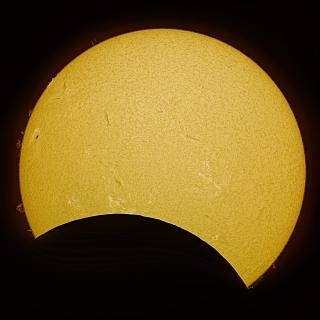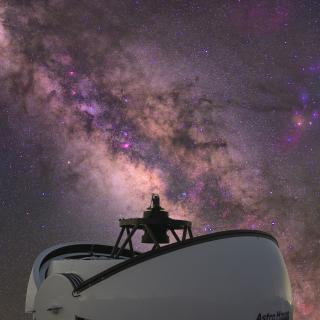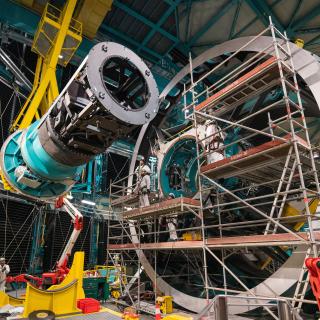It may interest you
-
 This Saturday, 29 March 2025, the Instituto de Astrofísica de Canarias (IAC) was able to follow the partial solar eclipse from the Teide Observatory in Tenerife. Although subtle to the naked eye, this eclipse was used by the IAC's outreach team to raise awareness of the phenomenon among a group of people from the ‘Friends of the IAC’ programme and IAC staff. At the same time, an observation was also made from the IAC Headquarters in La Laguna, which could be seen live on the centre's YouTube channel. The eclipse began at 09:14 UT and ended at 10:56 UT, with its maximum at 10:03 UT. For justAdvertised on
This Saturday, 29 March 2025, the Instituto de Astrofísica de Canarias (IAC) was able to follow the partial solar eclipse from the Teide Observatory in Tenerife. Although subtle to the naked eye, this eclipse was used by the IAC's outreach team to raise awareness of the phenomenon among a group of people from the ‘Friends of the IAC’ programme and IAC staff. At the same time, an observation was also made from the IAC Headquarters in La Laguna, which could be seen live on the centre's YouTube channel. The eclipse began at 09:14 UT and ended at 10:56 UT, with its maximum at 10:03 UT. For justAdvertised on -
 The robotic Transient Survey Telescope (TST) installed in the Teide Observatory of the Instituto de Astrofísica de Canarias (IAC) has successfully started its scientific observations. It is a 1 metre telescope which permits the detection of rapidly varying objects, and is set up to map the sky. The TST has been built and run via a public-private collaboration with Canary funding. The Transient Survey Telescope (TST) is a telescope with a 1 metre primary mirror, built to take long-term observations called surveys, for the detection of faint, rapidly varying objects over a wide area of the skyAdvertised on
The robotic Transient Survey Telescope (TST) installed in the Teide Observatory of the Instituto de Astrofísica de Canarias (IAC) has successfully started its scientific observations. It is a 1 metre telescope which permits the detection of rapidly varying objects, and is set up to map the sky. The TST has been built and run via a public-private collaboration with Canary funding. The Transient Survey Telescope (TST) is a telescope with a 1 metre primary mirror, built to take long-term observations called surveys, for the detection of faint, rapidly varying objects over a wide area of the skyAdvertised on -
 During the week from 16th to 20th September the International Conference LSST@Europe 6 will be held in La Palma a meeting which will bring together some 140 researchers in astrophysics from more than 20 countries. At the meeting the latest advances in the LSST project, a front-lione initiative in the exploration of the Universe which will be carried out at the Vera Rubin Observatory in Chile and which has close collaboration from the Instituto de Astrofísica de Canarias (IAC). The project consists in carrying out a new and detailed census of the sky, called the Legacy Survey of Space andAdvertised on
During the week from 16th to 20th September the International Conference LSST@Europe 6 will be held in La Palma a meeting which will bring together some 140 researchers in astrophysics from more than 20 countries. At the meeting the latest advances in the LSST project, a front-lione initiative in the exploration of the Universe which will be carried out at the Vera Rubin Observatory in Chile and which has close collaboration from the Instituto de Astrofísica de Canarias (IAC). The project consists in carrying out a new and detailed census of the sky, called the Legacy Survey of Space andAdvertised on
